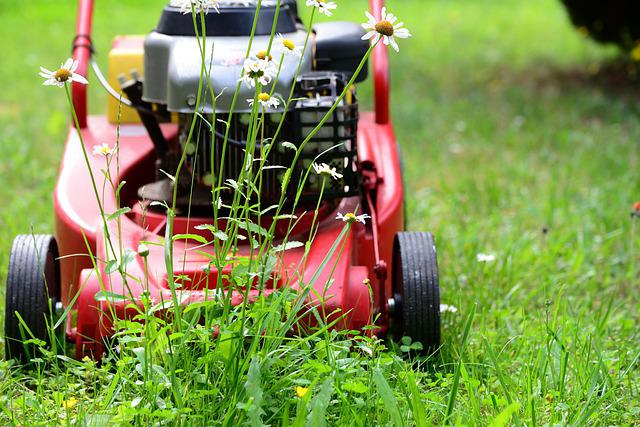18 May 2022
There is a growing trend among homeowners to fill their landscape with native and wild flowers or edibles instead of grass. However, there are still a significant number of people who prefer a solid, green turf for their lawn. If you are one of the latter, here are some things you should be dealing with at this time of the year.
Spreading
Putting down a pre-emergent and/or fertilizer in the spring will help to give you a healthy turf. Avoid spreading when the grass is wet because the product will simply stick to the wheels of your spreader and to your feet and you will be wasting time and money. Also, don’t use the spreader if the wind velocity is greater than 5 or 10 miles per hour. If it is windy, you will get an uneven distribution or you will benefit your neighbor’s yard in lieu of your own. In the case of a fertilizer, too much can burn the lawn.
Read the information on the product you will be spreading. Don’t guess about the setting on your spreader; too much can harm the lawn and potentially damage it; too little and you have wasted effort. If the model number of your spreader isn’t listed on the product bag, go online and find a phone number for the spreader manufacturer. They usually have a toll-free exchange and representatives who are happy to help.
If you are in the market for a new spreader, be sure it comes equipped with a side guard for discharge. This is particularly handy for going around the perimeter of the yard. Putting weed ‘n feed on your driveway or walk won’t make it grow any larger.
After you have finished spreading, give the area a light watering. This is to liquify the chemicals so that they will penetrate to the roots. Be careful not to drag your hose over the product.

Mowing
Be sure that your mower blades are sharp. It is recommended that you sharpen the blades after every 10 hours of mowing. So, if it takes you 30 minutes to cut your grass, schedule a sharpening after 20 mows. Dull blades will tear the tops of the grass and your lawn will start to look tan, but more importantly torn blades can be harmful to the grass plants themselves because they will be more vulnerable to insect infestation.
Be sure your mower is set to the proper height. If it has been a while since you have been able to mow, the grass might be taller than normal. Rule of thumb is to remove no more than one-third of the blade to avoid stressing the plants. The norm is to have the grass height at three or three and one-half inches. Mowing too short will not leave enough of the grass shaft to absorb the sunlight and turn it into food.
Before starting to mow, run the tips of your fingers through the grass. If they come back dry, you are good to go. Mowing when the grass or ground is wet or even too moist, will cause the deck of the mower to become clogged and the ground will compact, leaving less oxygen for the roots.
If you have a choice, use mulcher blades. This allows the bits of grass to settle down on the ground and decompose giving your lawn some added nutrition. A side discharge will leave rows of mown grass which is, at best, unsightly. Many people like to bag their clippings. However, you have spent money on product that you are now just throwing away. Besides, it adds to the land fill.
Rain Gauge
Amounts of rainfall can vary within a city and even between near neighborhoods. To keep your lawn healthy, it needs one inch of water per week. So, if you know you have had a shower with half an inch of moisture, you won’t need to water as soon and only the additional half inch.
